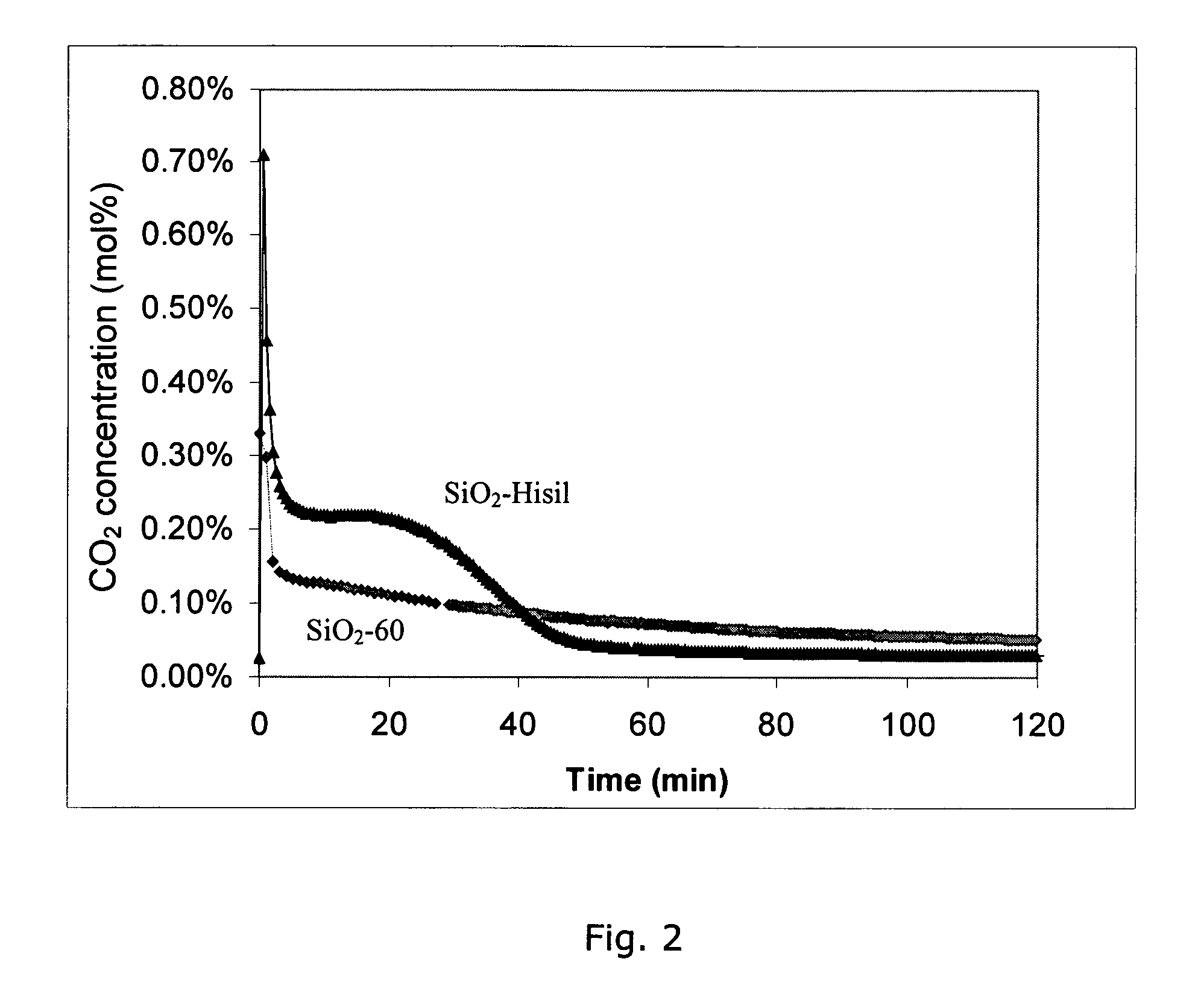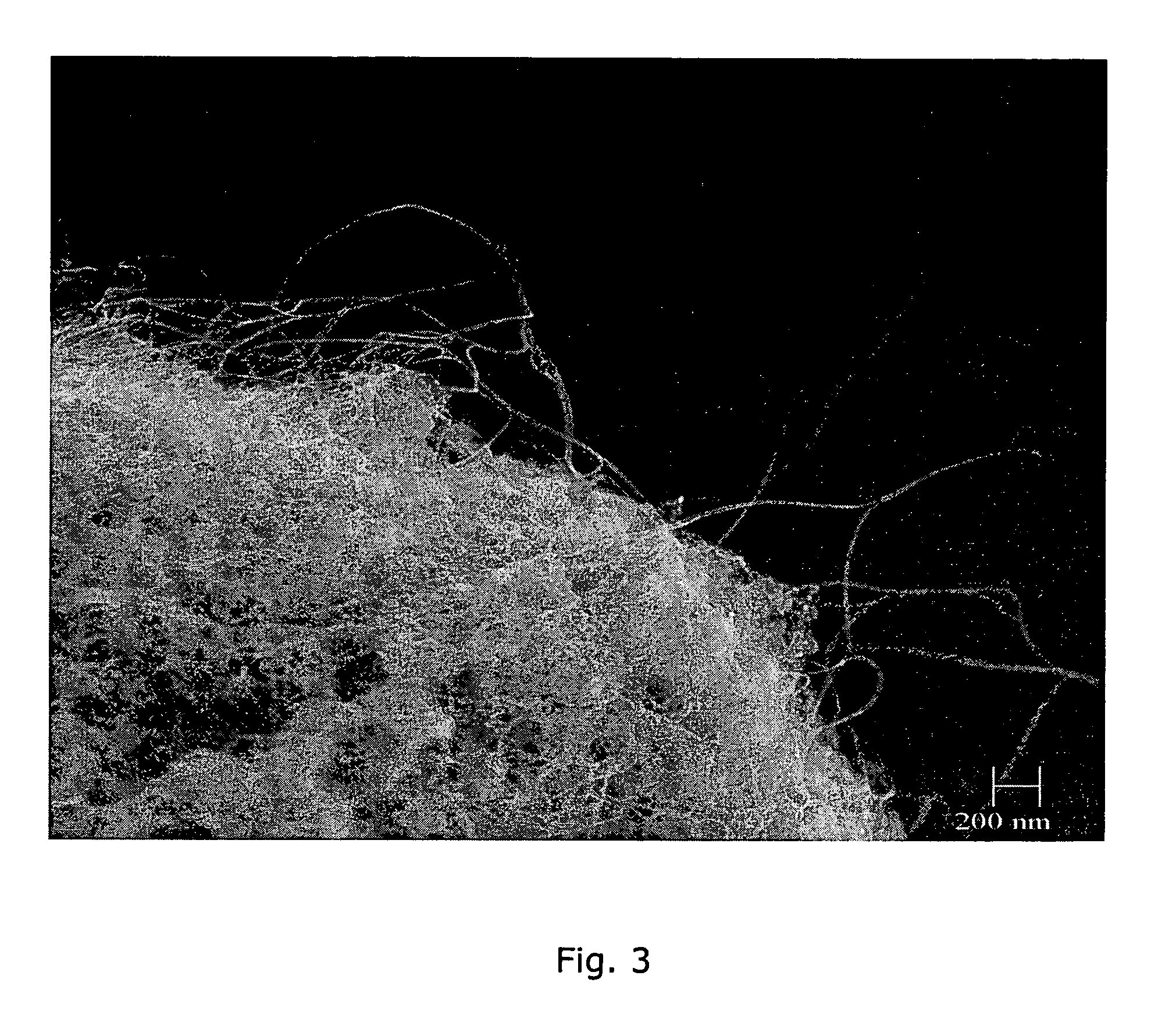Single-walled carbon nanotube-ceramic composites and methods of use
a single-walled carbon nanotube and composite technology, applied in the field of single-walled carbon nanotube composites, can solve the problems of difficulty in obtaining the quantity and form of single-walled carbon nanotubes needed for practical technology, and achieve the effect of improving the quality of single-walled carbon nanotubes
- Summary
- Abstract
- Description
- Claims
- Application Information
AI Technical Summary
Benefits of technology
Problems solved by technology
Method used
Image
Examples
example
[0071]Work was conducted to determine the nanotube diameter distribution and quantity which optimized the performance of the nanotube-ceramic composites in field emission devices.
[0072]SWNTs obtained at higher temperatures show a broader diameter distribution centered at large diameters but bundles of smaller size [2].
[0073]A similar increase in diameter is observed when H2 is added in small concentrations to the carbon source fed to the reactor. However, if the concentration of H2 is too high, carbon nanofibers start to form and the process loses selectivity toward SWNT. For example, with pure CO, SWNTs of small diameter (0.8 nm OD) are produced; with 3% H2 in CO the diameter increases (1.3 nm OD); with 10% H2 in CO mostly multi-walled nanotubes (19 nm OD) are produced.
[0074]In parallel, the field emission characteristics of this series of samples were studied to determine the effect of SWNT diameter distribution and quality of the SWNT material. The I vs. V curves for the correspo...
PUM
| Property | Measurement | Unit |
|---|---|---|
| diameters | aaaaa | aaaaa |
| diameters | aaaaa | aaaaa |
| diameters | aaaaa | aaaaa |
Abstract
Description
Claims
Application Information
 Login to View More
Login to View More - R&D
- Intellectual Property
- Life Sciences
- Materials
- Tech Scout
- Unparalleled Data Quality
- Higher Quality Content
- 60% Fewer Hallucinations
Browse by: Latest US Patents, China's latest patents, Technical Efficacy Thesaurus, Application Domain, Technology Topic, Popular Technical Reports.
© 2025 PatSnap. All rights reserved.Legal|Privacy policy|Modern Slavery Act Transparency Statement|Sitemap|About US| Contact US: help@patsnap.com



